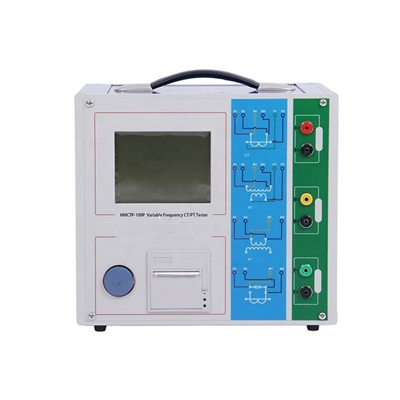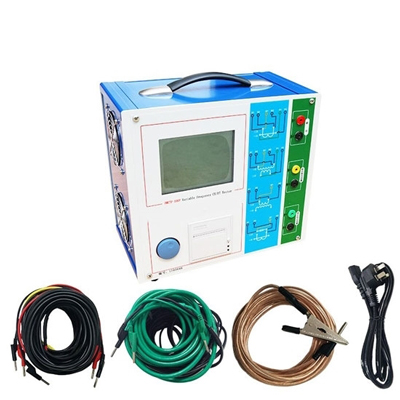How to Check Current Transformer Tester?
In the dynamic landscape of electrical systems, the reliability of current transformers (CTs) is paramount. To uphold the accuracy of your CT measurements, regular testing with a specialized Current Transformer Tester is essential. In this blog post, we'll delve into the key steps to effectively check your Current Transformer Tester, ensuring its optimal performance.
To check a current transformer (CT) using a CT tester, follow these general steps:

Safety First
Ensure that you are following all safety procedures and guidelines.
Confirm that the equipment is de-energized before attempting any testing.
Verify Connections
Check that the CT is correctly connected to the circuit or equipment it is monitoring.
Isolation
Isolate the CT from the system by opening the circuit breaker or disconnect switch.
Testing Equipment
Utilizing a dedicated CT tester is crucial for accurate and reliable results. CT testers are designed specifically for testing current transformers and typically offer multiple functions. These functions may include assessing the CT's ratio, polarity, and insulation resistance. The tester is equipped with the necessary features and settings to perform these tests accurately.
Ratio Test
The ratio test determines whether the current transformer is transforming the current accurately from the primary side to the secondary side. To perform this test, the CT tester injects a known current on the primary side and measures the resulting current on the secondary side. The ratio of these two currents should match the CT's specified turns ratio. Any deviation could indicate a problem with the CT's winding or core.
Polarity Test
The polarity test ensures that the direction of current flow aligns with the marked polarity of the CT. Correct polarity is essential for proper functioning in power systems. During the test, the CT tester injects a current in a known direction on the primary side and checks whether the resulting current on the secondary side aligns with the marked polarity. If there is a mismatch, it may lead to incorrect measurements in the power system.
Insulation Resistance Test
The insulation resistance test assesses the integrity of the insulation between the primary and secondary windings of the CT. This test helps identify any potential issues such as insulation breakdown or degradation. The CT tester applies a high voltage across the primary and secondary windings and measures the resistance. A lower insulation resistance could indicate a problem with the insulation, and corrective action may be needed to prevent further issues and ensure the CT's reliability.
Check for Grounds
Before reconnecting the current transformer (CT) to the system, it's crucial to check for any grounds or short circuits in the CT. Use an ohmmeter to measure the resistance between the primary and secondary windings. A low resistance value could indicate a potential ground fault, which needs to be addressed before reconnecting the CT to avoid safety hazards and ensure proper functionality.
Compare Results
After conducting the various tests (ratio, polarity, and insulation resistance), compare the obtained results with the specifications provided by the CT manufacturer. Look for any deviations or discrepancies. This step is essential for ensuring that the CT meets the required standards and operates within the specified parameters. If any discrepancies are identified, further investigation and corrective action may be necessary.

Documentation
Documenting the test results is a crucial aspect of the testing process. Create a comprehensive record that includes the date of the test, the specific tests conducted, the measured values, and any notes on the condition of the CT. Proper documentation aids in creating a maintenance history, tracking trends, and can be valuable for troubleshooting or future reference.
Reconnect and Energize
Once all tests are successfully completed, and any identified issues are addressed, proceed to reconnect the CT to the system. Ensure that all connections are secure and follow proper procedures for re-energizing the circuit. Take precautions to avoid any safety hazards during the reconnection process.
Regular Maintenance
Implementing a regular maintenance schedule is essential for the ongoing health and performance of the current transformer. Regularly scheduled tests and inspections help identify potential issues before they escalate, minimizing downtime and preventing unexpected failures. Adhering to a maintenance routine also aligns with industry best practices and ensures the long-term reliability of the CT.
Regularly checking your current transformer tester is key to maintaining the accuracy and reliability of your CT measurements. By following these steps, you ensure that your tester is in optimal condition, providing precise results for your electrical system. Choose the right tester, perform ratio and polarity tests, and verify insulation resistance to keep your current transformer measurements at their best. For more test and measurement equipment go to ATO.com.

